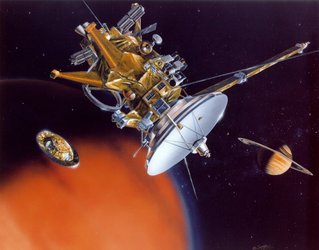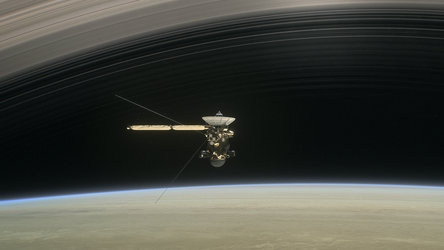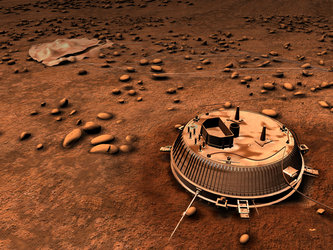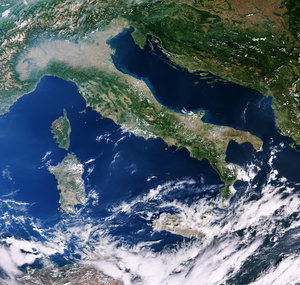Cassini-Huygens factsheet
Cassini-Huygens was a joint NASA/ESA/ASI mission. NASA’s Cassini spacecraft orbited Saturn, making an extensive survey of the ringed planet and its moons. The ESA Huygens probe was the first to land on a world in the outer Solar System – on the surface of Titan, Saturn’s largest moon. Data from Cassini and Huygens may offer clues about how life began on Earth.
Name: Cassini-Huygens, after Dutch scientist Christiaan Huygens (1629-1695) and Italian Jean-Dominique Cassini (1625-1712).
Huygens discovered Saturn's rings and, in 1655, its largest moon, Titan. Cassini discovered the Saturnian satellites Iapetus, Rhea, Tethys and Dione. In 1675 he discovered what is known today as the 'Cassini Division', the narrow gap separating Saturn's rings.
Objective: Conduct in-depth studies of Saturn, its moons, rings and magnetic environment, and land on the planet’s largest moon Titan.
Launch date: 15 October 1997.
Launch vehicle: Titan-IVB/Centaur at Cape Canaveral, United States
Mission end: 15 September 2017.
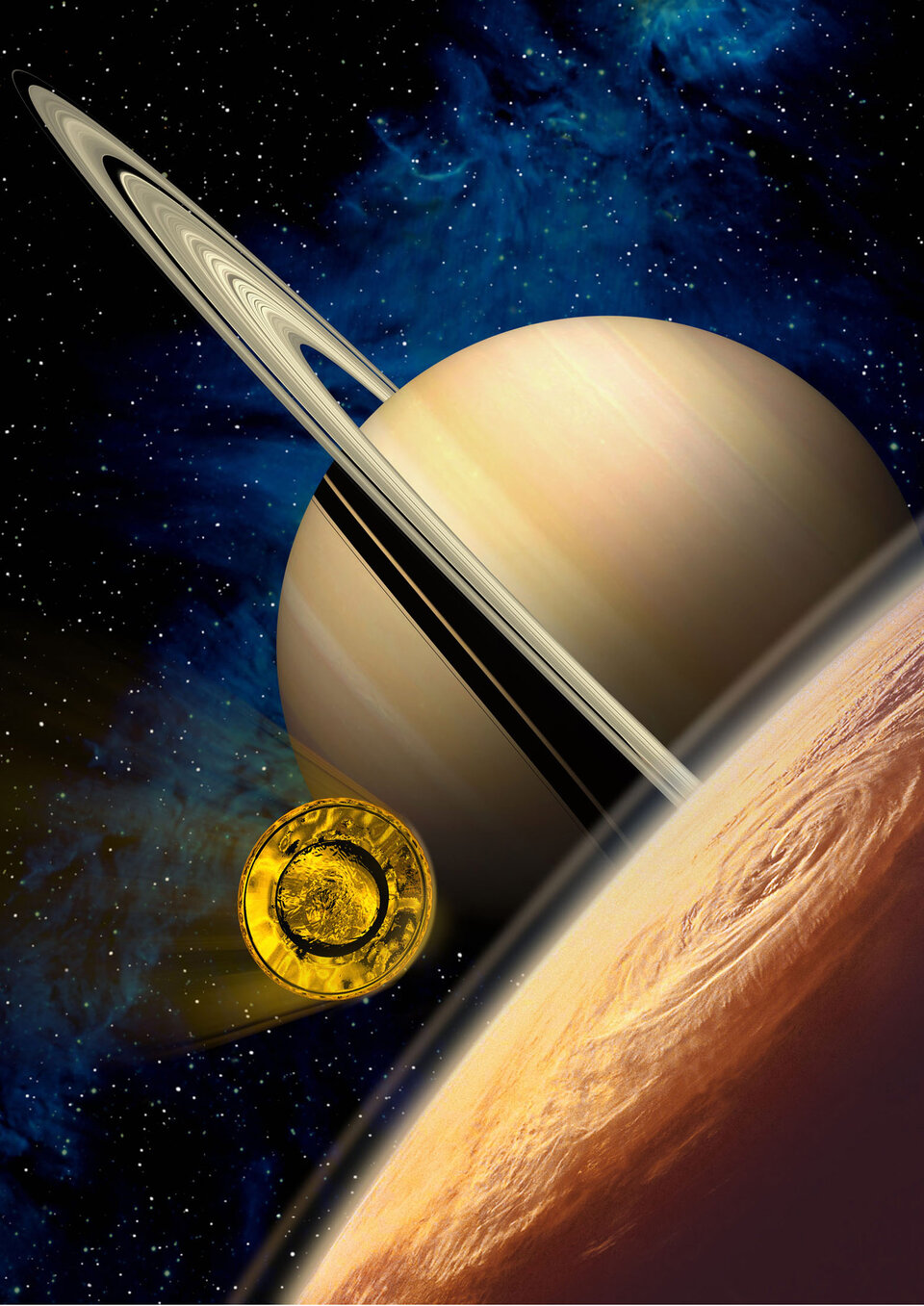
Dimensions: Cassini-Huygens weighed 5.6 tonnes and measured 6.7 m high by more than 4 m wide.
Instruments:
Cassini’s 12 scientific instruments included imaging cameras, radar, spectrometers and magnetometers: the Imaging Science Subsystem (ISS), Cassini radar (RADAR), Radio Science Subsystem (RSS), Ion and Neutral Mass Spectrometer (INMS), Visible and Infrared Mapping Spectrometer (VIMS), Composite Infrared Spectrometer (CIRS), Cosmic Dust Analyser (CDA), Radio and Plasma Wave Spectrometer (RPWS), Cassini Plasma Spectrometer (CAPS), Ultraviolet Imaging Spectrograph (UVIS), Magnetospheric Imaging Instrument (MIMI) and Dual-technique Magnetometer (MAG).
The Huygens probe comprised six instrument packages: the Huygens Atmosphere Structure Instrument (HASI), Gas Chromatograph and Mass Spectrometer (GCMS), Aerosol Collector and Pyrolyser (ACP), Descent Imager/Spectral Radiometer (DISR), Doppler Wind Experiment (DWE) and the Surface Science Package (SSP).
Fast facts

- The 5.6-tonne Cassini-Huygens spacecraft made four gravity-assist swing-by manoeuvres. These manoeuvres were: Venus (April 1998), Venus (June 1999), Earth (August 1999), and Jupiter (December 2000). In December 2004, towards the end of Cassini's third orbit around Saturn, the Huygens probe was ejected on a 22-day cruise to Titan. Huygens reached Titan on 14 January 2005.
- Cassini-Huygens was the largest interplanetary spacecraft ever built.
- Gravity-assists from two swing-bys of Venus and one of Earth provide the equivalent of 68 040 kilograms of rocket fuel.
- During the long journey to Saturn, ESA scientists 'woke up' the Huygens probe every six months to check that all was well.
- The Huygens probe can withstand temperatures of up to 18 000°C in front of the heat shield. The heat generated as Huygens travelled through Titan's thick gas atmosphere was immense.
- Titan is one of the most mysterious objects in our Solar System. It is the second largest moon and the only one with a thick, methane-rich, nitrogen atmosphere. Experts think that its atmosphere resembles that of a very young Earth.















 Germany
Germany
 Austria
Austria
 Belgium
Belgium
 Denmark
Denmark
 Spain
Spain
 Estonia
Estonia
 Finland
Finland
 France
France
 Greece
Greece
 Hungary
Hungary
 Ireland
Ireland
 Italy
Italy
 Luxembourg
Luxembourg
 Norway
Norway
 The Netherlands
The Netherlands
 Poland
Poland
 Portugal
Portugal
 Czechia
Czechia
 Romania
Romania
 United Kingdom
United Kingdom
 Slovenia
Slovenia
 Sweden
Sweden
 Switzerland
Switzerland


























